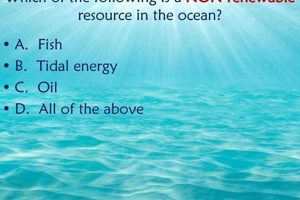
Ocean energy derives from various sources, including tides, waves, currents, and thermal and salinity gradients. These sources are naturally replenished through cyclical processes like the lunar cycle, wind patterns, and solar radiation.... Read more »

Harnessing the vast power of the ocean for clean electricity generation involves several key technologies. These methods exploit various natural phenomena, including the motion of waves, tides, and currents, as well as... Read more »

Wave energy converters (WECs) capture the kinetic motion of ocean waves and transform it into electricity. Various technologies exist, including oscillating water columns, point absorbers, and overtopping devices, each using unique mechanisms... Read more »

Harnessing power from the ocean involves understanding several key principles related to energy conversion, resource availability, and environmental impact. For instance, wave energy converters leverage the oscillatory motion of waves to generate... Read more »

Ocean energy’s renewability stems from the continuous natural processes that drive it. Tides, waves, and ocean currents are powered by predictable astronomical forces and solar radiation, constantly replenished and unaffected by human... Read more »

Harnessing power from the sea involves converting the kinetic energy of waves, tides, currents, and thermal gradients into usable electricity. For example, tidal barrages capture water during high tide and release it... Read more »


